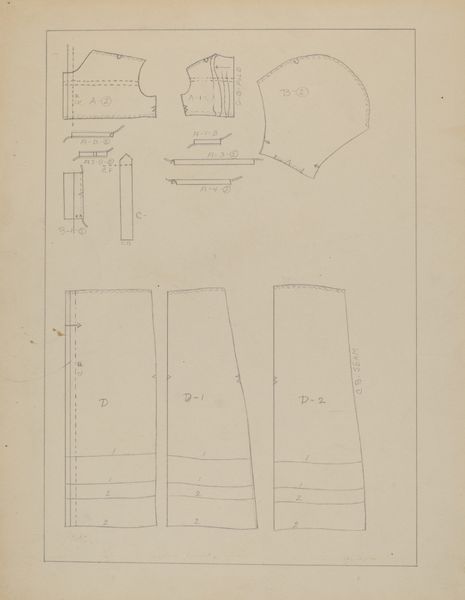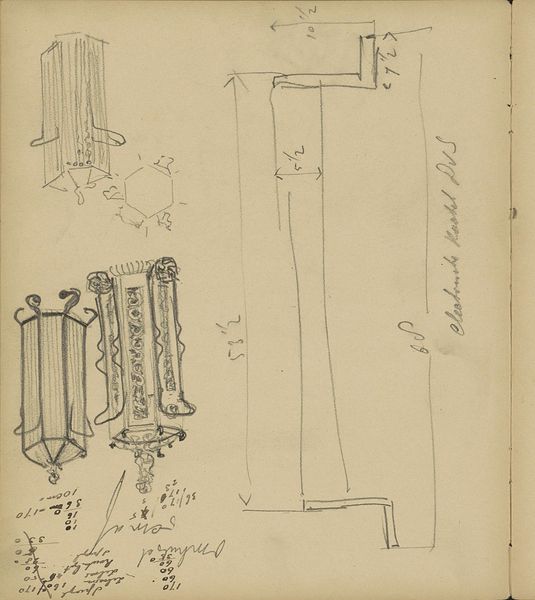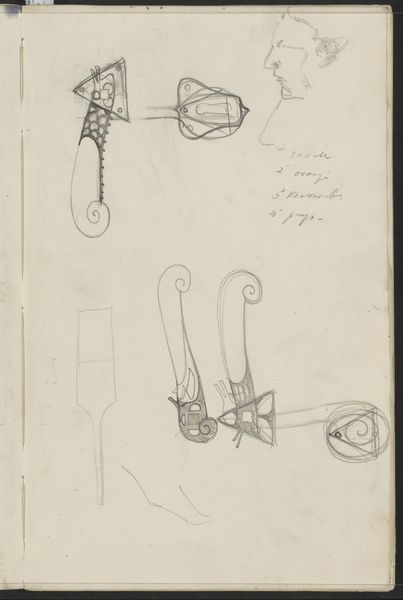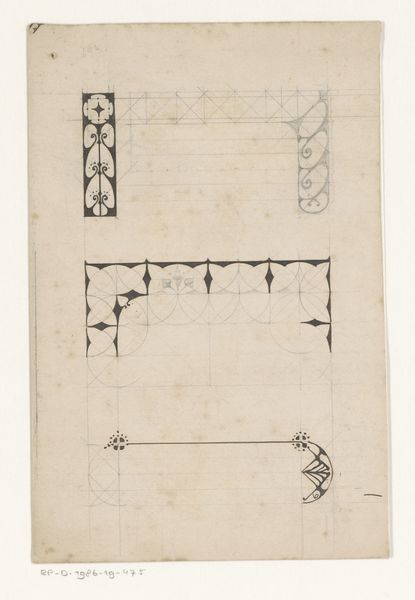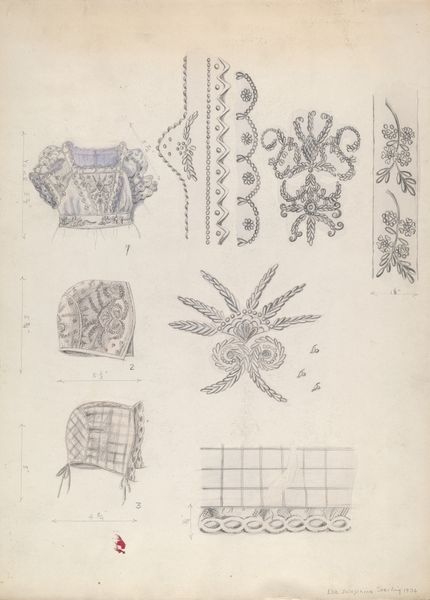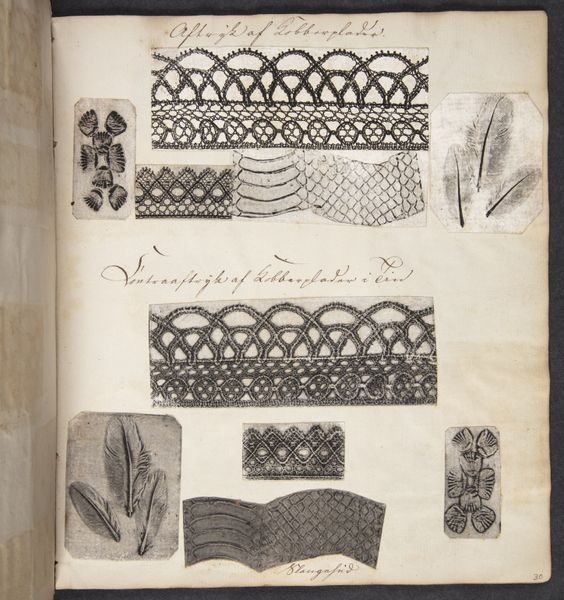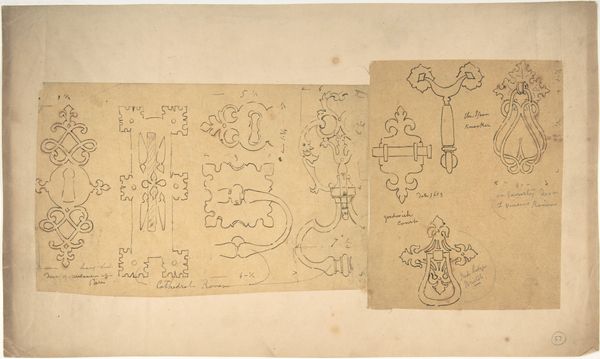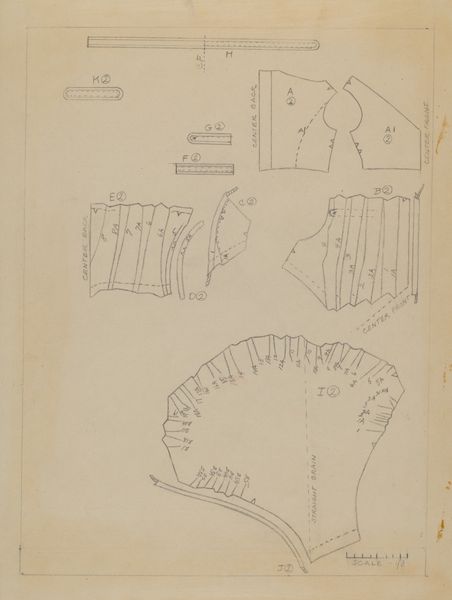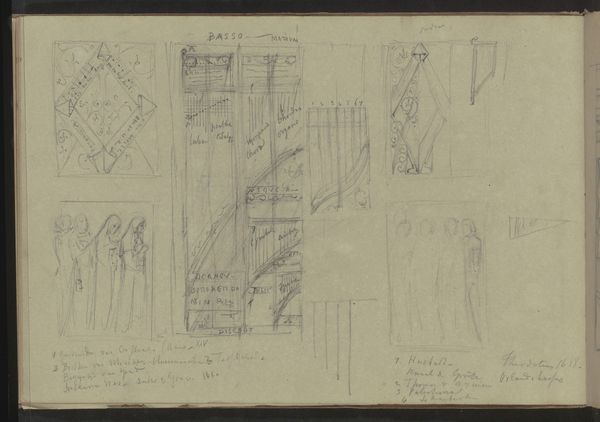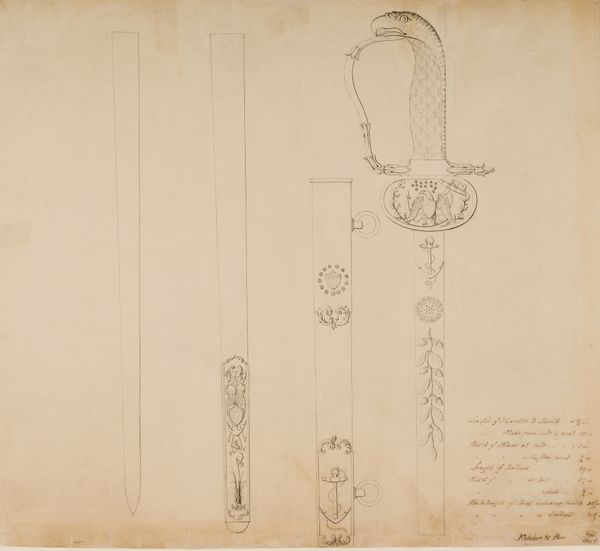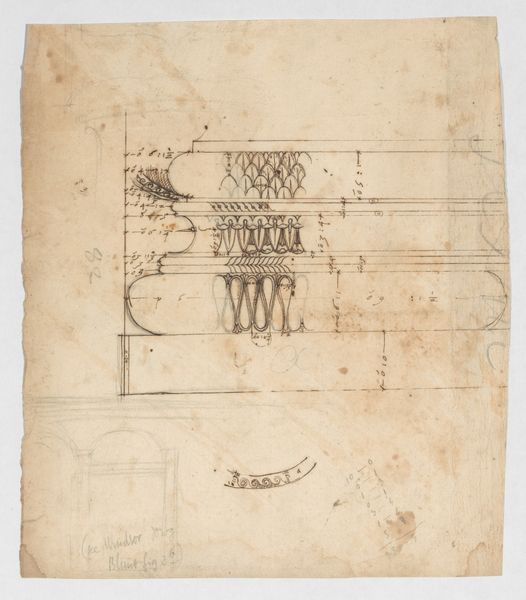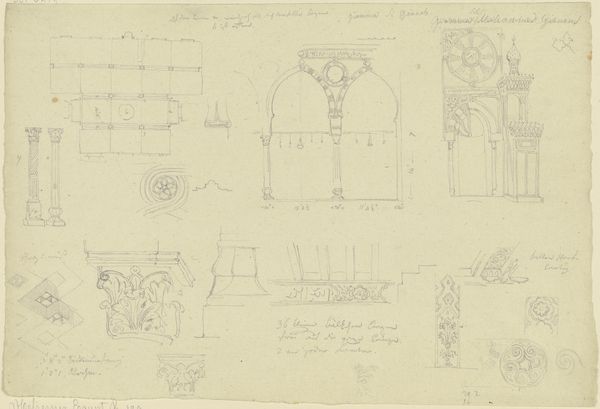
drawing, ink, pen
#
drawing
#
quirky sketch
#
asian-art
#
old engraving style
#
sketch book
#
figuration
#
personal sketchbook
#
ink
#
sketchwork
#
ink drawing experimentation
#
pen-ink sketch
#
line
#
sketchbook drawing
#
pen
#
storyboard and sketchbook work
#
sketchbook art
Dimensions: height 199 mm, width 167 mm
Copyright: Rijks Museum: Open Domain
Curator: This is a drawing entitled "Spaanse en Chinese ornamentale gevesten," which translates to "Spanish and Chinese ornamental hilts," created sometime between 1876 and 1951 by Theo Nieuwenhuis. Editor: Immediately, I notice a captivating austerity in the composition. The bareness of the ink on the aged paper lends a delicate quality. The drawing looks like an inventory of forms, perhaps designs meant for later execution. Curator: Precisely. The work displays several hilt designs side by side. Nieuwenhuis juxtaposes, contrasts, and thus compares, handles crafted from diverse cultural arsenals—likely showcasing distinct techniques of embellishment. Editor: I am struck by how each element—the circles, squares, and crossing lines—contributes to an elaborate geometry. Notice the contrasting density of patterns between those labelled Spanish and the hilts that bear the inscription "China." Could this asymmetry reflect actual differences? Curator: It's plausible. However, this image can function as an indicator of a larger cultural practice, namely the academic turn to ornament which was widespread when industrial techniques made it hard to control and standardize forms in architectural design. These were produced by designers precisely to study these relations between craft and its reproducibility in a serial manner. Editor: That’s an intriguing point. One that raises essential questions about the canon. Does it suggest a deeper interplay between ornamentation, function, and the social position that they play in an artwork's narrative? Curator: That's what makes this so engaging. Its graphic elements interact on the page, suggesting relationships while refraining from any explicit symbolic representation. Editor: Indeed. Thank you for offering a fascinating insight. This subtle drawing leaves me considering the global reach of ornament and design traditions in modern history. Curator: And for me, this design opens further analysis into understanding form and aesthetics and a world that prized structure.
Comments
No comments
Be the first to comment and join the conversation on the ultimate creative platform.
